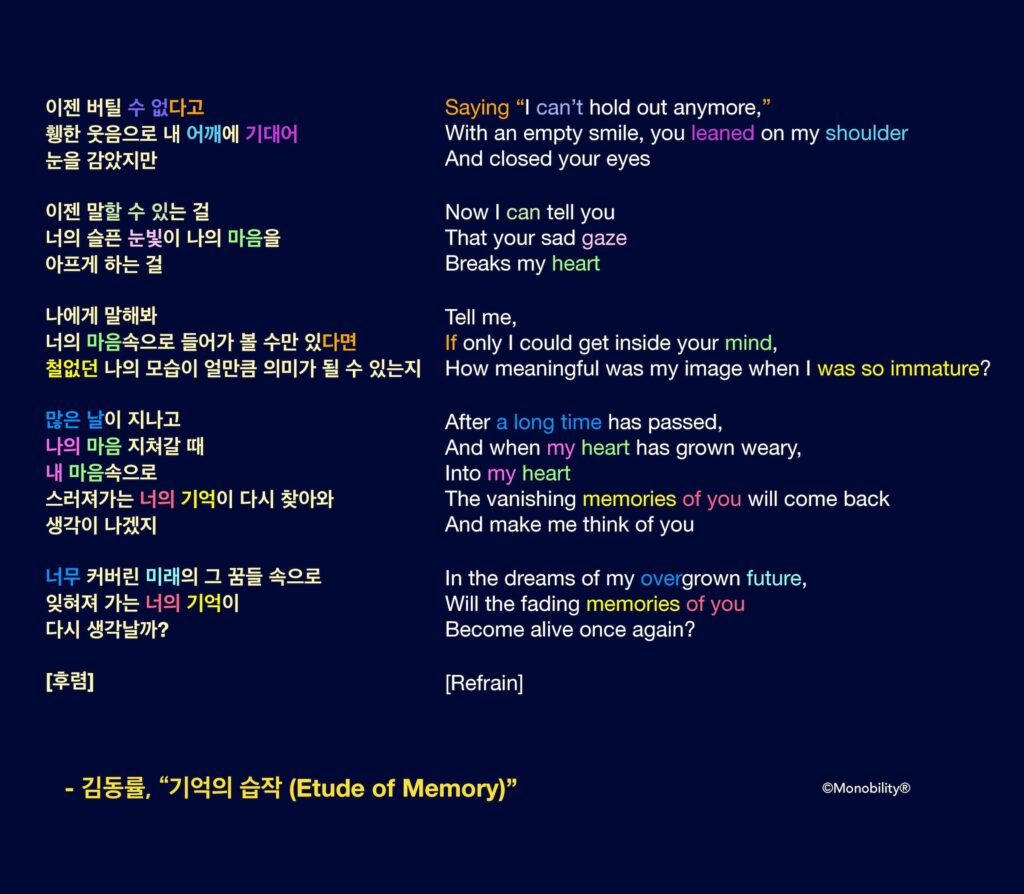Conjunctions are one of the most sensitive elements that determine the meaning of a sentence as a whole. There are two main differences between English and Korean conjunctions:
- In English, conjunctions precede a clause. Korean conjunctions come after a clause. To comprehend what your interlocutor is saying, therefore, you have to listen patiently without interrupting, at least to the half-point where a subordinate clause pauses, and pay special attention to the end of the clause. So in Korea, interrupting is particularly not wise, let alone ill-mannered. After all, only desperately power-hungry persons, not smart ones, cut in while another human being tries to communicate with them.
- Unlike English, some Korean conjunctions can be applied to a full sentence ending with -다. When they are used that way, the whole meaning of such a clause (and the often omitted subject) can be sometimes very different from the normal case where the same conjunctions are used by conjugating the verb. There are mainly two meanings of such “conjunctions after a clause ending in -다.”:
(i) Indirect Quotation: the clause is for quoting what a 3rd party indicated as an idea or said as a statement.
- 물을 자주 안 줘도 되니까 이 나무는 키우기 쉽겠어요. This tree will be easy to grow since it doesn’t have to be watered too often. [The verb of the clause 되다 is conjugated with a conjunction -니까 which indicates a reason: and the reason is the speaker’s opinion. ]
- 물을 자주 안 줘도 된다니까 이 나무는 키우기 쉽겠어요. This tree will be easy to grow since they say that it doesn’t have to be watered too often. [The same clause has ended with -다, making it a full sentence, then added -니까 which indicates a reason: in this case, it is an indirect quotation of what a 3rd party said or wrote, which the speaker only heard or read. It often corresponds to English “Since they say that ….” ]
- 이젠 버틸 수 없고, 그러니까 나 그만 할래. I can’t hold out anymore, so I quit. [없다 is conjugated with -고 which means “…, and” (continuation or addition after the clause) ]
- 이젠 버틸 수 없다고 하면서 넌 울었지. Saying that you can’t hold out anymore, you cried. [-고 is added to the same full sentence ending with -다. In this case, -고 is a contraction of -라고, and as in “없다라고,” the clause becomes a quotation: You(or he/she/they) said, “……..” ]
(ii) Clear Hypothesis: for example, when -면 is added directly to a clause ending in -다.
- 너의 마음속으로 들어가 볼 수만 있다면 If only I could get inside your mind [ a full sentence with -있다 is followed by conjunction -면 (if) – it is a clear hypothesis of an unrealizable event. Compare it with 너의 마음속으로 들어가 볼 수만 있으면, which has a nuance that implies that it may be somehow realizable. ]
- 이것을 어린아이가 입에 댄다거나 먹는다거나 할 경우에는 위험합니다. It is dangerous in case a child puts this in the mouth or eats it. [full sentences ending with 댄다 and 먹는다 are followed by conjugation -거나 that means “or.” By saying this way, the speaker clearly assumes such cases only as “hypotheses.” Again, the nuance is a bit more hypothetical than 이것을 어린아이가 입에 대거나 먹으면 위험합니다. ]
As a recap, here is my previous post on major Korean conjunctions:
In his all-time hit “기억의 습작 (Etude of Memory)” for which he wrote the lyrics and composed the entire music at the age of 18 or 19, 김동률 softly begins with the first line as the above case (i) – an indirect quotation – as if he quietly spoke to himself. Then he heightens our emotions of lost love and regrets with the case (ii) – a clear hypothesis – in the third stanza of the lyrics, where his trademark grand background music starts to roar like bigger and bigger waves of sentiments. Without knowing the Korean language as native Koreans speak, it would be an enormous challenge to even attempt to translate such intricate, sensitive, and elegant songs written by 김동률, probably one of the most intellectually talented singers in the Korean pop music scene.
After so many years, this song is still loved by many Koreans and sung by a plethora of professional singers. It was a main OST in a blockbuster movie “건축학개론 Architecture 101 (2012)” which 4 million Koreans watched in movie theaters. For now, I invite all of our members to enjoy my version of the Music Video for 기억의 습작 below.

Join Monobility® Group for much more:



